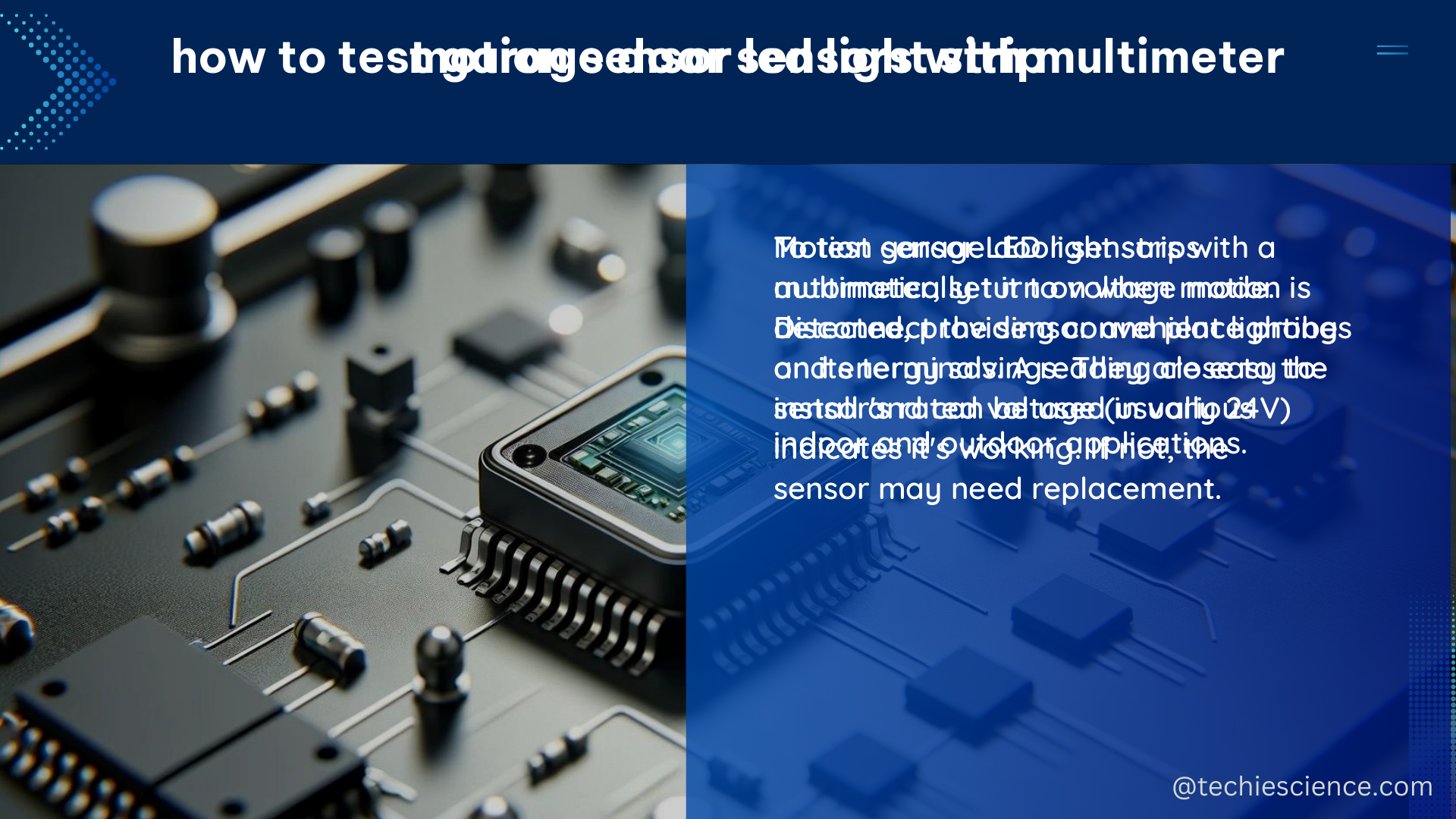Motion sensor LED light strips are a versatile and energy-efficient lighting solution that can be used in a variety of indoor and outdoor applications. These smart lighting systems automatically turn on when they detect movement, making them ideal for areas like stairwells, garages, walkways, and other low-traffic spaces where manual control may not be practical.
Understanding the Technical Specifications
When it comes to selecting the right motion sensor LED light strip for your needs, there are several key technical specifications to consider:
Motion Sensor Range and Detection Angle
The motion sensor range refers to the maximum distance at which the sensor can detect movement. This can vary widely, with some models offering a range of up to 30 feet, while others may only detect movement within a few feet. The detection angle is also important, as it determines the width of the area that the sensor can cover. Typical detection angles range from 90 to 180 degrees.
| Specification | Range |
|---|---|
| Motion Sensor Range | 3-30 feet |
| Detection Angle | 90-180 degrees |
LED Brightness and Color Temperature
The brightness of the LED lights is typically measured in lumens, with higher lumen counts indicating brighter output. Motion sensor LED light strips can range from 300 to 1000 lumens or more, depending on the number of LEDs and their individual brightness.
The color temperature of the LEDs is also an important factor, as it can affect the overall ambiance and visibility of the lighting. Warm white (2700K-3000K) and cool white (5000K-6500K) are the most common color temperatures, with the latter offering a brighter, more energetic appearance.
| Specification | Range |
|---|---|
| Brightness | 300-1000 lumens |
| Color Temperature | 2700K-6500K |
Power Supply and Wiring
Motion sensor LED light strips can be powered in a variety of ways, including battery-powered, USB-powered, or hardwired to a 12V or 24V DC power supply. The power supply voltage and current requirements will depend on the specific model and the number of LEDs being used.
The wiring configuration is also an important consideration, as some motion sensor LED light strips may require a specific 3-wire setup (power, ground, and signal) to function properly. Proper wiring is crucial for ensuring reliable operation and avoiding potential safety hazards.
| Specification | Range |
|---|---|
| Power Supply | Battery, USB, 12V/24V DC |
| Wiring Configuration | 3-wire (power, ground, signal) |
DIY Installation and Customization

Installing a motion sensor LED light strip can be a straightforward DIY project, but there are a few key steps to keep in mind:
-
Determine the Mounting Location: Choose a location that will allow the motion sensor to effectively detect movement in the desired area. Consider factors like the sensor’s range and detection angle, as well as any potential obstructions.
-
Prepare the Power Supply: Ensure that the power supply (battery, USB, or hardwired) is compatible with the LED light strip and can provide the necessary voltage and current.
-
Connect the Wiring: Follow the manufacturer’s instructions for the proper wiring configuration, which may involve connecting the power, ground, and signal wires.
-
Adjust the Sensor Settings: Many motion sensor LED light strips allow you to customize the sensitivity, delay time, and other settings to optimize the performance for your specific needs.
-
Test and Troubleshoot: Once the installation is complete, test the motion sensor and LED lights to ensure they are functioning correctly. If you encounter any issues, refer to the manufacturer’s troubleshooting guide or seek additional support.
Customizing Your Motion Sensor LED Light Strip
One of the key advantages of motion sensor LED light strips is their customizability. Many models offer a range of features and options that allow you to tailor the lighting to your specific requirements:
- Color Changing: Some motion sensor LED light strips feature RGB or RGBW LEDs, allowing you to choose from a wide range of color options or even create dynamic color-changing effects.
- Brightness Adjustment: Many models offer adjustable brightness settings, enabling you to fine-tune the light output to suit your needs.
- Sensor Sensitivity: Adjustable motion sensor sensitivity settings allow you to control the distance and angle at which the lights will activate.
- Delay Time: The delay time setting determines how long the lights will remain on after the last detected movement.
- Scheduling: Some advanced motion sensor LED light strips can be programmed to turn on and off at specific times or based on ambient light levels.
By taking the time to understand the technical specifications and customization options, you can create a motion sensor LED light strip system that perfectly meets your needs and enhances the functionality and ambiance of your indoor or outdoor spaces.
References:
- Intelligent Street Lighting with Internet of Things (IoT) Connectivity
- Why can’t the look of film be recreated on digital footage? – Reddit
- The spawn of AtariLab and the Universal Lab Interface
- Can I connect 2 motion detectors with one power supply to a single LED strip?
- Data Acquisition (DAQ) – The Ultimate Guide – Dewesoft

The lambdageeks.com Core SME Team is a group of experienced subject matter experts from diverse scientific and technical fields including Physics, Chemistry, Technology,Electronics & Electrical Engineering, Automotive, Mechanical Engineering. Our team collaborates to create high-quality, well-researched articles on a wide range of science and technology topics for the lambdageeks.com website.
All Our Senior SME are having more than 7 Years of experience in the respective fields . They are either Working Industry Professionals or assocaited With different Universities. Refer Our Authors Page to get to know About our Core SMEs.